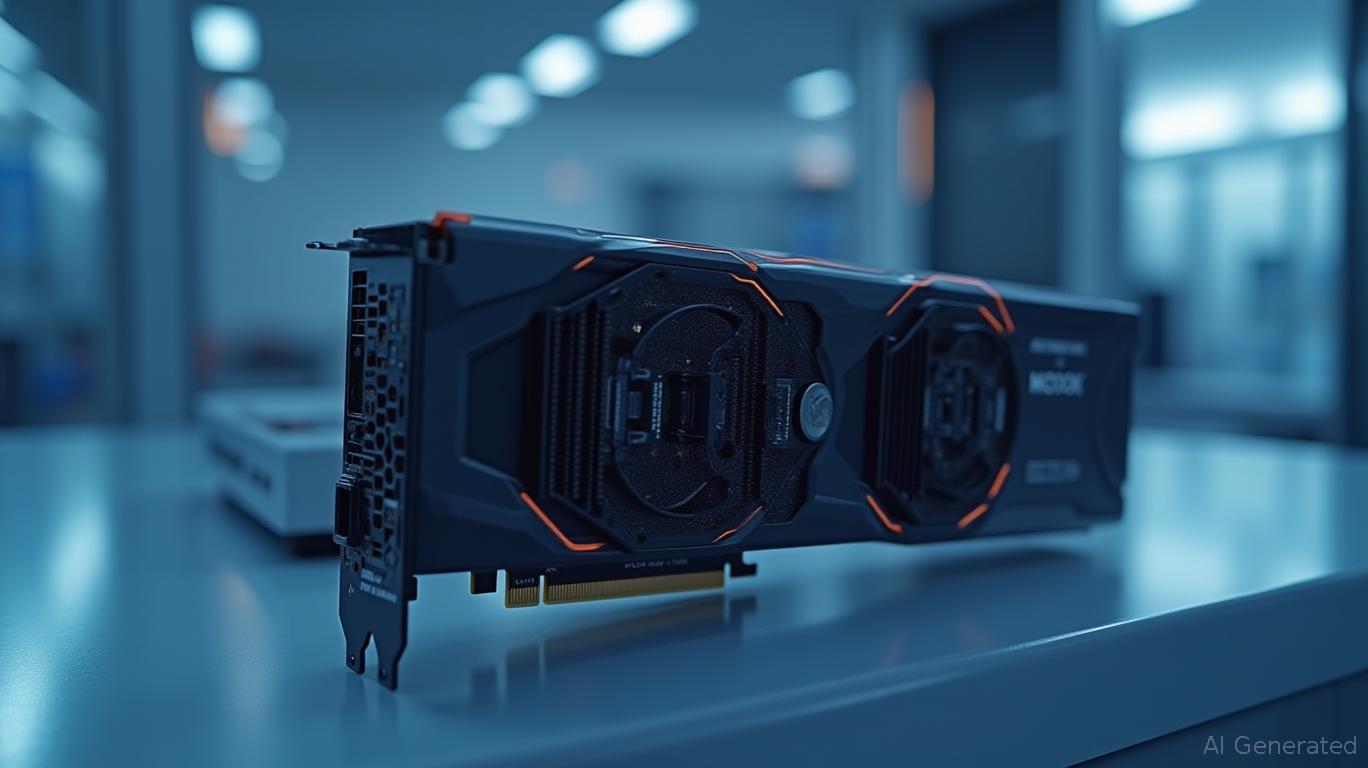AMD's AI Chip Play: A Buy Rating Backed by Structural Gains
The race for dominance in AI chips is intensifying, and
(AMD) has positioned itself as a critical player. UBS's maintained Buy rating and $150 price target underscore a compelling thesis: AMD's technical prowess in HBM bandwidth, inference market leadership, and strategic partnerships could drive outsized returns despite near-term volatility. Here's why investors should take note.Technical Edge: HBM3E/HBM4 and the MI350/MI400 Roadmap
AMD's Instinct MI350 series, launched at its “Advancing AI” event, marks a pivotal step forward. Paired with Micron's HBM3E memory (offering 8 TB/s bandwidth and supporting 520 billion parameters per GPU), the MI350X and MI355X deliver 35x faster inference and 38x better energy efficiency in training compared to 2020 baselines. This scalability is critical as AI models grow larger and more complex.

Looking ahead, the MI400 series (due in mid-2026) will integrate HBM4, promising 10x higher inference performance on Mixture of Experts (MoE) models. AMD's Helios rack-scale system, which pairs MI400 GPUs with Ethernet-based scaling, could outpace NVIDIA's Vera Rubin architecture in bandwidth and capacity. Analysts at UBS note this positions AMD to close the gap with NVIDIA in data-center GPU sales, where it currently holds a 40% share.
The Inference Market: AMD's $400 Billion Opportunity
UBS estimates the AI accelerator market could hit $600 billion by 2028, with inference demand growing at an 80%+ CAGR as real-time applications like chatbots, enterprise tools, and autonomous systems expand. AMD is prematurely capitalizing:
- The MI350 series outperforms NVIDIA's B200 in cost efficiency, delivering 40% more tokens per dollar for large language models.
- Customers like Meta and OpenAI are migrating from older AMD GPUs to MI350, while Crusoe's $400 million deal for 13,000 MI355X chips underscores strong enterprise adoption.
Lisa Su, AMD's CEO, argues that inference—not training—is now the primary driver of GPU demand. With its focus on high-memory capacity (critical for large models) and open AI ecosystems, AMD is well-placed to capture 15-20% of the market by 2028.
Competitor Dynamics: NVIDIA's Shadow and AMD's Leverage
NVIDIA's dominance in AI chips is undeniable, but AMD's cost leadership and partner-driven innovation create openings:
- Price vs. Performance: AMD's MI350X offers $0.002 per token for Llama 3.3 inference, versus NVIDIA's $0.0035—a 40% cost advantage.
- Ecosystems: AMD's ROCm software stack and partnerships with Microsoft, Oracle, and Amazon (via AWS Inferentia) enable broader adoption.
However, NVIDIA's Vera Rubin superchip and Blackwell GPUs remain formidable. AMD must scale production and maintain Micron's HBM3E supply chain dominance to avoid bottlenecks.
Strategic Risks: Supply Chains and Geopolitical Headwinds
AMD's success hinges on navigating risks:
1. Export Restrictions: U.S. sanctions could cost AMD $800 million in Chinese sales, forcing reliance on markets like the U.S. and Europe.
2. HBM Dependency: Micron's HBM3E/HBM4 supply is irreplaceable—any delays or pricing spikes could hurt margins.
3. “Sell-the-News” Volatility: Post-product-launch dips (e.g., AMD's 10% pullback after the MI350 announcement) may test investors' resolve.
Investment Thesis: Buy the Dip, Hold for the AI Renaissance
Despite these risks, UBS's $150 price target reflects a 1.99 beta and 86.9x P/E ratio, signaling a bet on AMD's long-term AI trajectory. Key catalysts include:
- Helios system adoption by cloud giants by 2026.
- $6 billion buyback program boosting EPS.
- Agentic AI's rise, which UBS forecasts will demand 14 zettaFLOP/s by 2030—driving sustained compute spending.
Historical performance reinforces this strategy: A buy-and-hold approach after 10%+ pullbacks following product launches from 2020–2025 delivered a 21% CAGR, 69.88% excess return, and a 0.71 Sharpe ratio. This underscores AMD's tendency to rebound strongly after near-term volatility, rewarding investors who stay disciplined during dips.
While near-term volatility is inevitable, AMD's structural advantages in inference, memory tech, and partnerships make it a must-own name for growth investors.
Final Take: AMD is at the forefront of an AI chip revolution where inference, not training, will dictate market share. UBS's Buy rating isn't just about today's performance—it's a bet on AMD's ability to scale into a $600 billion opportunity. For investors with a multi-year horizon, the risks are manageable, and the rewards are asymmetric. Hold for the AI renaissance.

Comments
No comments yet